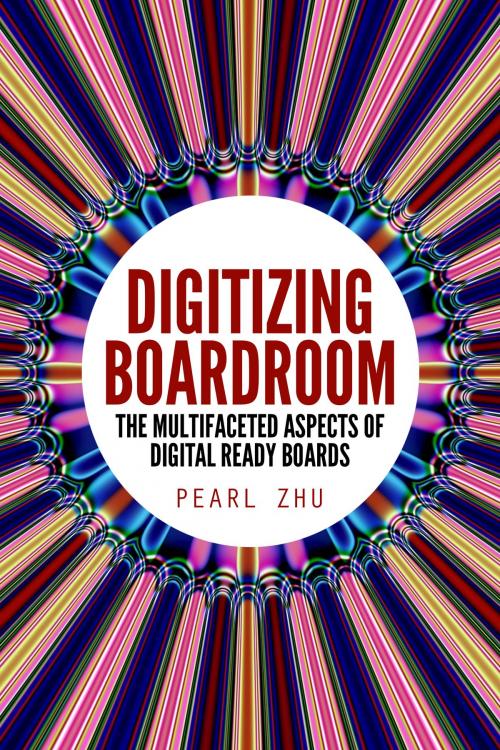Digitizing Boardroom
The Multifaceted Aspects of Digital Ready Boards
Business & Finance, Business Reference| Author: | Pearl Zhu | ISBN: | 9781483578835 |
| Publisher: | BookBaby | Publication: | August 23, 2016 |
| Imprint: | BookBaby | Language: | English |
| Author: | Pearl Zhu |
| ISBN: | 9781483578835 |
| Publisher: | BookBaby |
| Publication: | August 23, 2016 |
| Imprint: | BookBaby |
| Language: | English |
Modern corporate boards play significant roles in guiding businesses toward the right direction and achieve expected business results. Due to the “VUCA” characteristics -Complexity, Uncertainty, Ambiguity and Velocity of the Digital Era, the directorship in any organization must have agility to adapt to changes, and build abilities to advise, inspire and motivate a group of people toward accomplishing shared visions and goals. If a Board is to fulfill its fiduciary responsibilities to its stakeholders, it needs to take a professional and systematic approach for assessing strategy, prioritizing agendas, advising changes, overseeing risks and keeping track of business performance via efficient tools. BoDs perhaps do not always participate in developing business strategy, but the Board needs to determine suitability, adequacy, viability, and sustainability of the organization in advance. Chapter 1 The Digital Themes of Boardrooms: With many organizations and the society as a whole reach the inflection point of digital transformation, the modern corporate board as one of the top governance bodies plays a crucial role in setting business leadership tones and driving the organization’s digital transformation. A professional digital board is not only about filling with cool-headed, high-professional and high-intelligent BoDs, but also about tuning the structured process to digitize itself, optimize decision-making capacity, inspire innovation, and improve its overall effectiveness, agility, and maturity. Chapter 2 A Strategic Board: The board plays a critical role in overseeing business strategies, it is important to keep the board strategically focused. Also, the board as the top leadership team advises business strategies, it doesn’t always mean the Board itself is being strategic enough. The board represents the ownership and they really cannot do a good job if they don't have the knowledge to challenge and set the broad strategic goals. They need to educate themselves by hearing different views about the organization, its environment & digital ecosystem, strategic alternatives and develop a clear vision on how to move the business forward. Chapter 3 A Performance-driven Board: Corporate Performance Management (CPM) has many descriptors and understandings globally. However, there is universal agreement that best practice performance management frameworks should inform the board, management, staff and key stakeholders on the performance of the organization in delivering services or programs efficiently, in achieving organizational outcomes effectively and in making the progress towards achieving sustainability effortlessly. There is no question that performance is the priority for boards. Many boards think that the role of the individual director is conformance, which has the result to stifle probing questions and natural tensions that allow for good decision-making. There is no doubt that the board only fulfills its role to shareholders and the management team when it is focused on performance. To some degree, conformance is inherent within the value-driven performance. Chapter 4 An Innovative Board: The Board of Directors are interactive change agents that represent the organization, stockholders, and senior management. No longer are boards sitting in a room and just voting on various policies. It is one of the requirements of the Board members to participate, or even lead, in constantly suggesting areas of innovation since their vistas are likely to be wider, and also because the Board should be highly accountable for strategies for the future of the company. The board plays a crucial role in management innovation as well. Management innovation means to accelerate innovation at the multitude of levels, to create the space for dialogue and debate about why it is important for their organization, developing a common understanding of it, creating the necessity and motivation for it. It also needs to align innovation strategy
Modern corporate boards play significant roles in guiding businesses toward the right direction and achieve expected business results. Due to the “VUCA” characteristics -Complexity, Uncertainty, Ambiguity and Velocity of the Digital Era, the directorship in any organization must have agility to adapt to changes, and build abilities to advise, inspire and motivate a group of people toward accomplishing shared visions and goals. If a Board is to fulfill its fiduciary responsibilities to its stakeholders, it needs to take a professional and systematic approach for assessing strategy, prioritizing agendas, advising changes, overseeing risks and keeping track of business performance via efficient tools. BoDs perhaps do not always participate in developing business strategy, but the Board needs to determine suitability, adequacy, viability, and sustainability of the organization in advance. Chapter 1 The Digital Themes of Boardrooms: With many organizations and the society as a whole reach the inflection point of digital transformation, the modern corporate board as one of the top governance bodies plays a crucial role in setting business leadership tones and driving the organization’s digital transformation. A professional digital board is not only about filling with cool-headed, high-professional and high-intelligent BoDs, but also about tuning the structured process to digitize itself, optimize decision-making capacity, inspire innovation, and improve its overall effectiveness, agility, and maturity. Chapter 2 A Strategic Board: The board plays a critical role in overseeing business strategies, it is important to keep the board strategically focused. Also, the board as the top leadership team advises business strategies, it doesn’t always mean the Board itself is being strategic enough. The board represents the ownership and they really cannot do a good job if they don't have the knowledge to challenge and set the broad strategic goals. They need to educate themselves by hearing different views about the organization, its environment & digital ecosystem, strategic alternatives and develop a clear vision on how to move the business forward. Chapter 3 A Performance-driven Board: Corporate Performance Management (CPM) has many descriptors and understandings globally. However, there is universal agreement that best practice performance management frameworks should inform the board, management, staff and key stakeholders on the performance of the organization in delivering services or programs efficiently, in achieving organizational outcomes effectively and in making the progress towards achieving sustainability effortlessly. There is no question that performance is the priority for boards. Many boards think that the role of the individual director is conformance, which has the result to stifle probing questions and natural tensions that allow for good decision-making. There is no doubt that the board only fulfills its role to shareholders and the management team when it is focused on performance. To some degree, conformance is inherent within the value-driven performance. Chapter 4 An Innovative Board: The Board of Directors are interactive change agents that represent the organization, stockholders, and senior management. No longer are boards sitting in a room and just voting on various policies. It is one of the requirements of the Board members to participate, or even lead, in constantly suggesting areas of innovation since their vistas are likely to be wider, and also because the Board should be highly accountable for strategies for the future of the company. The board plays a crucial role in management innovation as well. Management innovation means to accelerate innovation at the multitude of levels, to create the space for dialogue and debate about why it is important for their organization, developing a common understanding of it, creating the necessity and motivation for it. It also needs to align innovation strategy















